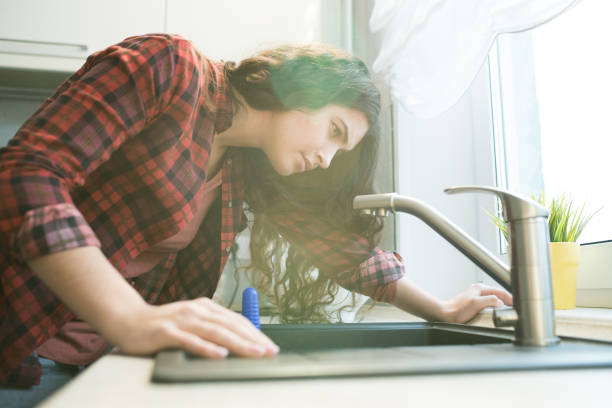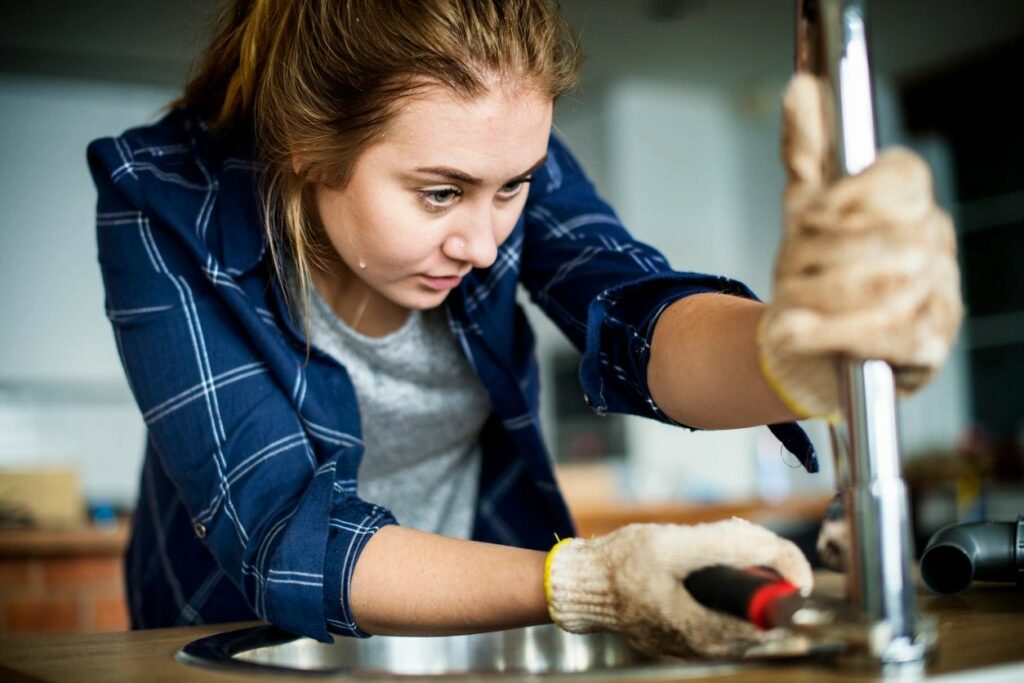How It's Important to Rectify a Malfunctioning Faucet
How It's Important to Rectify a Malfunctioning Faucet
Blog Article
We've encountered the article relating to Water Dripping from Faucet: Why and How to Fix listed below on the internet and thought it made perfect sense to talk about it with you over here.

Leaking taps may appear like a minor trouble, yet their influence goes beyond just the inconvenience of the sound. From wasting water to incurring unnecessary financial costs and health risks, ignoring a dripping faucet can lead to numerous effects. In this write-up, we'll look into why it's critical to resolve this typical house concern immediately and efficiently.
Wastage of Water
Ecological Effect
Dripping taps contribute significantly to water wastage. According to the Environmental Protection Agency (EPA), a solitary tap leaking at one drip per second can squander more than 3,000 gallons of water per year. This not just pressures water resources yet additionally affects environments and wild animals based on them.
Step-by-Step Guide to Repairing a Dripping Faucet
Tools Needed
Before trying to deal with a trickling faucet, gather the needed devices, consisting of an adjustable wrench, screwdrivers, replacement components (such as washing machines or cartridges), and plumber's tape.
Common Faucet Issues and Their Solutions
Determine the kind of tap and the details concern triggering the drip. Usual troubles consist of worn-out washing machines, corroded valve seats, or faulty O-rings. Refer to producer directions or on the internet tutorials for detailed support on repair services.
Financial Prices
Increased Water Bills
Past the ecological influence, trickling taps can pump up water expenses substantially. The accumulated wastage with time equates into higher utility expenditures, which might have been prevented with timely fixings.
Prospective Property Damage
In addition, extended dripping can bring about damage to components and surfaces bordering the faucet. Water buildup can cause discoloration, corrosion, and also structural problems if left unattended, causing extra fixing prices.
Health Issues
Mold and Mold Development
The continuous existence of moisture from a dripping faucet creates an optimal setting for mold and mold growth. These fungi not only endanger indoor air quality but also posture health and wellness risks, specifically for people with respiratory system problems or allergic reactions.
Waterborne Illness
Stagnant water in dripping faucets can end up being a breeding ground for germs and various other virus, boosting the danger of waterborne illness. Pollutants such as Legionella bacteria grow in stagnant water, possibly leading to major ailments when consumed or breathed in.
DIY vs. Expert Repair service
Advantages and disadvantages of DIY Repair Service
While some may try to repair a trickling faucet themselves, DIY repair services come with their very own collection of challenges. Without appropriate knowledge and tools, do it yourself attempts can aggravate the issue or cause incomplete fixings, prolonging the issue.
Advantages of Hiring a Specialist Plumber
Hiring a professional plumber makes sure that the underlying reason for the leaking tap is addressed efficiently. Plumbing professionals have the competence and tools to detect and fix faucet issues efficiently, saving time and reducing the risk of additional damage.
Environmental Responsibility
Specific Payment to Preservation
Taking duty for taking care of leaking faucets aligns with broader initiatives towards water conservation and environmental sustainability. Every individual's activities collectively make a significant influence on maintaining valuable resources.
Lasting Living Practices
By prioritizing prompt fixings and embracing water-saving practices, people contribute to sustainable living techniques that benefit both present and future generations.
Safety nets
Regular Upkeep Tips
To prevent trickling faucets, execute routine upkeep such as cleaning aerators, evaluating for leaks, and changing damaged parts immediately. Additionally, think about mounting water-saving devices or upgrading to extra efficient fixtures.
Value of Prompt Services
Dealing with leaking taps as quickly as they're noticed avoids additional water wastefulness and potential damage, ultimately saving both water and money over time.
Effect On Building Worth
Assumption of Well-Maintained Property
Maintaining a residential or commercial property in good condition, including addressing upkeep concerns like leaking taps, boosts its viewed value and charm among possible purchasers or lessees.
Influence on Resale Worth
Properties with well-kept plumbing components, consisting of faucets, command higher resale values in the real estate market. Attending to leaking taps can contribute to a positive perception throughout home examinations and negotiations.
Conclusion
Attending to a trickling tap surpasses plain convenience; it's a vital action towards conserving water, reducing financial costs, and safeguarding health and wellness and residential or commercial property. Whether via do it yourself fixings or specialist help, acting to repair dripping taps is a little yet impactful means to advertise responsible stewardship of sources and add to a healthier, more lasting future.
Most Common Reasons for a Leaky Faucet and How to Stop the Drip
Whether it’s your kitchen faucet leaking or a bathroom faucet leaking, one leaky faucet can waste anywhere from three to 30 gallons of water every single day. If the constant drip-drip-drip doesn’t get your attention, your water bill will. The good news is that, by following a few simple steps, chances are pretty good you can fix the problem yourself.
Why is it dripping?
Before you start taking things apart, let’s break down some of the most common causes of a leaky faucet.
Bad O-ring.
A cartridge is a valve that controls the flow of water into the faucet spout. On cartridge faucets there’s an O-ring—the little disc attached to the stem screw that holds the faucet handle in place. If it’s loose or worn-out, it can cause your sink handle to leak. Of course, the cartridge itself could be worn out. If that’s the case, make sure you replace it with the exact same kind.
Corroded valve seat.
The valve seat connects the faucet and the spout. If the leak seems to be coming from the spout, it might be because a buildup of water sediment has corroded the valve seat.
Worn-out washers or seals.
A leaky spout could be caused by a bad washer that rests against the valve seat. It’s just a matter of time before friction takes its toll. It could also be the wrong size washer or one that’s been installed incorrectly. Water sediments can also corrode inlet and outlet seals.
Water pressure.
If the faucet only drips now and then, or when you turn the handles a certain way, you should probably check your home’s water pressure.
Loose or broken parts.
The adjusting ring and packing nuts in the stream screw can become loose over time, causing your sink handle to leak. Try tightening or replacing the packing nut. If the leak is coming from the pipes underneath the sink, you probably have a broken pipe or fitting. If that’s the case, you should definitely call a plumber.
Know your faucet.
Faucets come in a variety of types. Each one has its own assembly—and its own possible causes of leaks. Learning about the four most common kinds of faucets will help you know how to take them apart and make any repairs.
How to stop a leaky faucet
Fixing that leaky faucet doesn’t have to take a lot of time, money, or expertise. It’s usually a simple matter of replacing a worn-out washer or gasket, a loose O ring, or another part. Chances are really good you can do this yourself if you follow these simple steps.
Shut off the water.
Before you tackle the faucet, cut off the water supply to the sink. There should be one valve for hot and one for cold. Hand-turn them clockwise with your hands till they close. If there are no valves under the sink, head to the basement and shut off the main water supply to the house. Then turn on the faucet until it empties out the water that’s still in the line and you’re ready to start. It’s a good idea to cover the sink drain with a plug or a rag so you don’t lose any small pieces and parts while you’re working.

I'm certainly very focused on and I am hoping you enjoyed reading the new blog posting. Enjoyed our review? Please share it. Help other people find it. Thanks so much for your time invested reading it.
Report this page